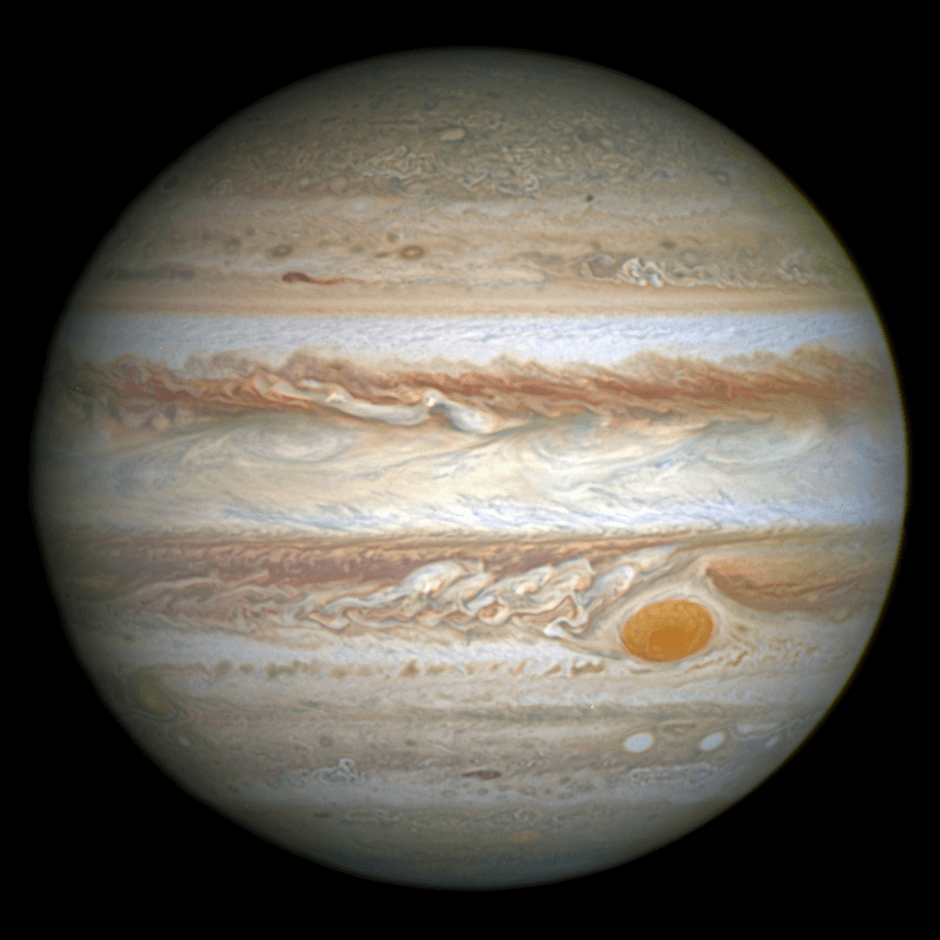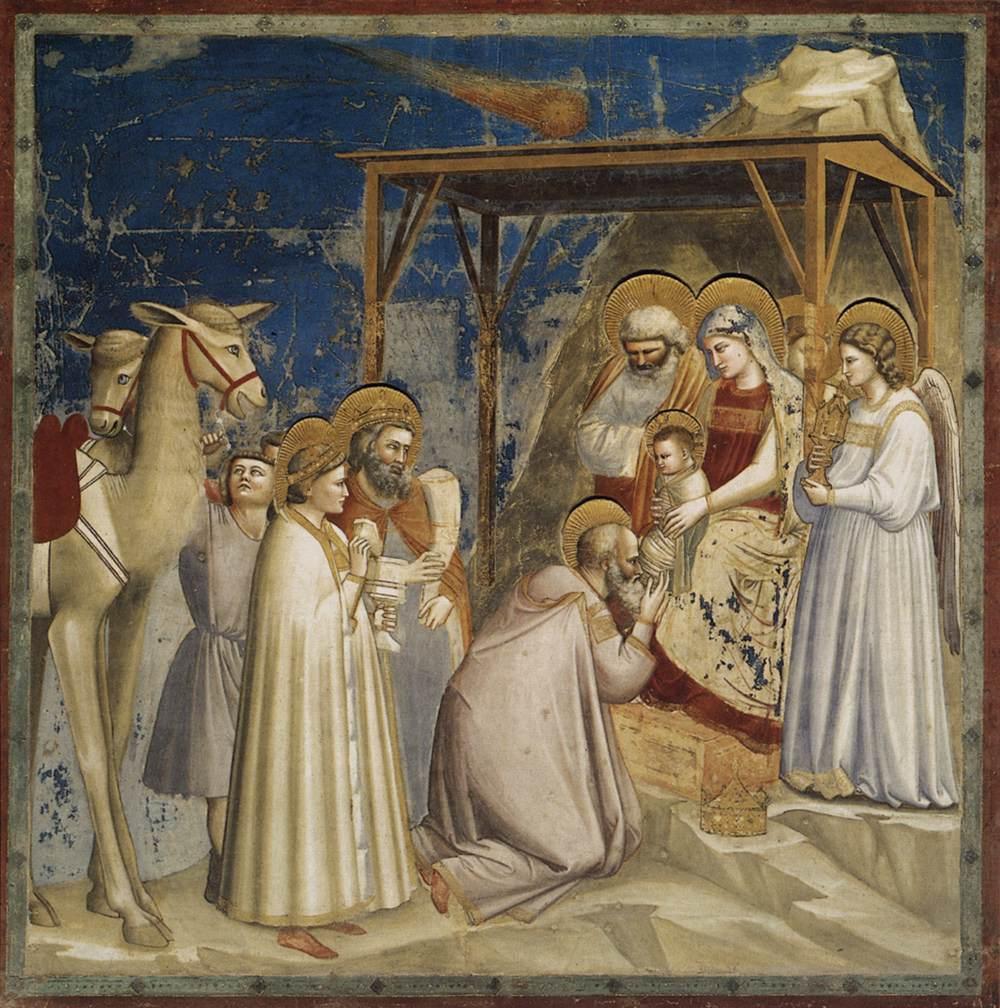Winter Solstice 2020: Jupiter and Saturn Align in Night Sky Tonight
December 21, 2020 – At around 4.30pm this evening, Saturn and Jupiter will align creating a Christmas star. It will be very brief, as the planets will quickly fall below the horizon on Winter Solstice 2020. It has been 800 years since this event occurred in the night sky.
Every day is extraordinary, depending on your perspective. But, today, 21st December 2020, is extraordinary on an interplanetary scale.
Here on earth, for us in the northern hemisphere, today is the Winter Solstice 2020, the shortest day of the year, the day with the least amount of sunlight and the official start of winter. With our Vitamin D-deprived skin sensing more than a minor chill, it's a day we'd probably prefer to be over rather quickly.
However, hundreds of thousands of kilometres above us in the night sky, an event some 800 years in the making is about to happen. Tonight, at around 4.30pm in the evening, the gas giants Saturn and Jupiter will align creating a Christmas star for Winter Solstice 2020. If you can see the night sky at that time, the occurrence will be visible with the naked eye and the planets together may look like one huge star. The distance between them will only be one-tenth of a degree, around the width of a coin held at arms length. Jupiter is the largest planet in our Solar System and has a total mass that is two-and-a-half times greater than that of all the other planets in our Solar System combined. It is one of the brightest objects visible to the naked eye in the night sky, second only to the Moon and Venus.
Jupiter is the largest planet in our Solar System and has a total mass that is two-and-a-half times greater than that of all the other planets in our Solar System combined. It is one of the brightest objects visible to the naked eye in the night sky, second only to the Moon and Venus.
The great conjunction that we will see on the Winter Solstice 2020 has not happened since 1623. However, that alignment wasn't visible to skywatchers across much of the Earth because of its location in the night sky. The last time this event was visible in the night sky was in 1226.
Jupiter takes some 12 years to make one full orbit around the sun. Lying further out and moving more slowly, it takes Saturn some 30 years to make its own journey around the star. These two planets pass each other on their circular tracks every 20 years, coming relatively close to one another. However, their orbits do not occur on exactly the same axis, meaning that the planets very rarely align. That they will tonight is an extremely rare happening.
Of course, the planets aren’t really coming that close to one another. Jupiter, the largest planet in our solar system, is 886,440km from the Earth and Saturn, the second-largest, is another 733,205km beyond it. Saturn is the second-largest planet in our Solar System. It is named after the Roman god of wealth and agriculture, after whom we also name Saturday - Saturn's Day. Saturn is famous for the rings which circle the planet. These are made mostly of ice particles, with some rock and dust. The planet has at least 82 moons that we know of, separate from the small moonlets that lie within its rings. Titan, Saturn's largest moon, is the second-largest moon in our Solar System, and is larger than the planet Mercury. It is the only moon in our Solar System to have a substantial atmosphere of its own.
Saturn is the second-largest planet in our Solar System. It is named after the Roman god of wealth and agriculture, after whom we also name Saturday - Saturn's Day. Saturn is famous for the rings which circle the planet. These are made mostly of ice particles, with some rock and dust. The planet has at least 82 moons that we know of, separate from the small moonlets that lie within its rings. Titan, Saturn's largest moon, is the second-largest moon in our Solar System, and is larger than the planet Mercury. It is the only moon in our Solar System to have a substantial atmosphere of its own.
The 'Christmas Star' of the Winter Solstice 2020 may be rare, but it is not the first time it will have captivated those looking into the night sky. Some people speculate that this very astronomical incident may be the same one that, according to the Bible, led the three wise men to Joseph, Mary and the newly born Jesus. That is not just modern speculation. The theory that Jupiter and Saturn's conjunction might be the source of the Star of Bethlehem was proposed in the early 17th Century by Johannes Kepler, a German astronomer and mathematician. Certainly, 2,000 years ago, at the time of Jesus's birth, people would have been acutely aware of what was happening in the night skies above them. With no man-made pollutants in the air and almost no light pollution at all, the stars in the sky would have been a vivid spectacle. If not the TV screens of its day, the night sky would certainly have been a backdrop more integral to every day than it will be for many with multiple modern distractions on Winter Solstice 2020.
 Giotto di Bondone - No. 18 Scenes from the Life of Christ - 2. Adoration of the Magi (1303). The Star of Bethlemhem is depicted at the top of this fresco.
Giotto di Bondone - No. 18 Scenes from the Life of Christ - 2. Adoration of the Magi (1303). The Star of Bethlemhem is depicted at the top of this fresco.
The coastal areas of Croatia look like they will have the clearest skies on Winter Solstice 2020, particularly in southern Dalmatia, where you have the best chance to see the event. But, you never know. You should have a glance to the heavens wherever you are this evening – the event will be visible across much of the planet, just after dark.
To be in with the best chance of seeing the conjunction, look outside at around 4.30pm. You'll have to be quick – in relative terms, the event won't actually take place over a short period of time but, because this is the Winter Solstice 2020, the two planets are very low in the night sky and will pass quite fast beyond the horizon. You should look in a south-westerly direction and keep your eyes quite low.
Give it a go wherever you are – it's unlikely you'll be here in another 400 years when it will happen again. If you have cloudy skies above you tonight, you can still look for the aftermath of the alignment the planets will be incredibly close to one another for the next few days. And, if you get a photo of the conjuncture of Winter Solstice 2020, TCN would love to hear from you.
All images used lie in the public domain, except main image, a composite made by TCN
Welcoming Winter Solstice in Croatia
December 19, 2018 — In the Northern hemisphere, the winter solstice occurs every year between December 20th and December 23rd, and it is the shortest and thus the darkest day of the year.
This year's winter solstice (or suncostaj in Croatian) falls on Friday, December 21st, and according to Zvjezdarnica, here in Croatia, the sun will rise at 7.36 AM and set at 4.12 PM.
The term solstice has its roots in the Latin word solstitium, which literally translates to "when the Sun stops; stands still." This is because, on this day, as seen from the Earth, the Sun reaches its southern-most position and seems to stand still at the Tropic of Capricorn until it turns around, i.e. reverses its direction.
Throughout history, to mark the beginning of a new year and welcome nature's springtime rebirth, many ancient civilizations celebrated the winter solstice with a number of different feasts, fasts, and fires.
These pre-Christian traditions, many of which have roots in European paganism, have survived to this day and are nowadays interwoven with the Christian beliefs and culture even in modern-day Croatia.
One such folklore tradition is the so-called koledarenje, a term denoting colinde or winter solstice songs — a type of Christmas caroling widespread throughout the Balkans, especially among Indo-European nations. In Croatia, this tradition is particularly emblematic of Primorje, Istria, Lika, and Dalmatia.
The term koledarenje comes from the old Slavic word koleda (lit. new year) while probably the most known Croatian koledari are the ones from Dubrovnik.
Koledarenje is one of the oldest customs in Croatia, and the traditional period to sing these carols is from St Thomas's Day on December 21st, until the morning of Christmas Day.
Here is the video of Dubrovnik's youngest koledari. Ironically, while our president named Kolinda apparently can't sing to save her life, these Dubrovnik children sure can.
If you happen to be in the area, and in the mood for celebrating the 2018 winter solstice, don't miss the Dubrovnik Winter Festival.
Stay tuned for more related content by following TCN's dedicated page.


